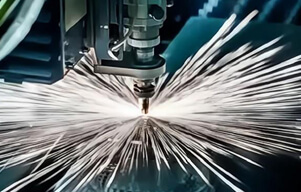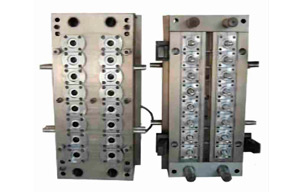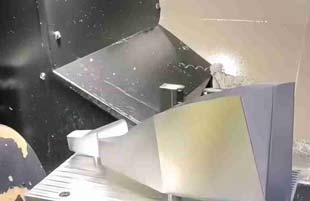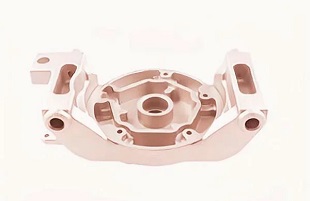In the competitive world of manufacturing, the ability to produce high-quality parts quickly and cost-effectively is crucial. Rapid injection molding (RIM) has emerged as a powerful technique that addresses these needs, offering numerous advantages over traditional manufacturing methods. In this blog post, we will explore the fundamentals of rapid injection molding, its components, application areas, benefits, and why it is gaining significant attention as a standout technology.
What is Rapid Injection Molding?
Rapid injection molding is a production process that involves creating plastic parts using molds. Unlike traditional injection molding, which can take weeks or even months to create a mold, rapid injection molding utilizes advanced techniques and materials to significantly speed up this process. This process is particularly advantageous for producing prototypes, short-run production parts, and bridge tooling before full-scale production. The primary goal of RIM is to reduce lead times and costs while maintaining high-quality standards.
Working Principle of Rapid Injection Molding
Rapid injection molding (RIM) operates on the principle of injecting molten thermoplastic material into a pre-designed mold cavity. This process begins with heating the thermoplastic until it becomes fluid, allowing it to be injected into the mold under high pressure. Once inside the mold, the material cools and solidifies, taking the shape of the cavity.
What sets RIM apart from traditional injection molding is the use of rapid tooling. Rapid tooling involves producing molds quickly and cost-effectively, often using advanced manufacturing techniques such as 3D printing or CNC machining. These molds are less durable than those used in traditional injection molding but can be created in a fraction of the time and at a significantly lower cost. This makes RIM ideal for prototyping, short production runs, and situations where speed to market is critical. Traditional injection molding, in contrast, uses more robust molds that are time-consuming and expensive to produce, making it more suitable for high-volume production runs where the mold cost can be amortized over a large number of parts
Components of Injection Molding Setup
Injection Unit:
The injection unit is crucial in an injection molding machine, responsible for melting and injecting plastic into the mold. Key components include the hopper, which holds and feeds plastic pellets into the machine; the screw, which rotates inside the barrel to transport, melt, and mix the plastic; the barrel, a heated chamber housing the screw to maintain the melting temperature; and the nozzle, which injects the molten plastic into the mold cavity, ensuring a precise flow.
Clamping Unit:
The clamping unit is essential for holding the mold halves together and ensuring they remain securely closed during the injection and cooling phases. It includes a clamping mechanism that generates the necessary force, often using hydraulic or mechanical systems, to withstand the high pressure of injected plastic. The unit also features platens, which are large plates holding the mold halves; one platen remains stationary while the other moves to facilitate the opening and closing of the mold. Additionally, the clamping unit incorporates an ejector system, which employs pins or plates to push the finished part out of the mold once it has cooled and solidified.
Mold:
The mold, a custom-designed cavity, is where the plastic part takes shape. In rapid injection molding, molds are typically crafted from materials such as aluminum or softer steels for expedited and cost-effective production. Key components of the mold include the cavity and core, defining the part's shape, with the cavity serving as the female portion and the core as the male portion. Cooling channels are integrated to circulate coolant, ensuring even and swift cooling of the part. Additionally, vents facilitate the escape of trapped air during injection, while runners guide the molten plastic into the mold cavities.
Control System:
The control system is like the brain of the injection molding machine, coordinating all settings for consistent and accurate production. It regulates temperature to melt and inject plastic optimally. It also adjusts injection pressure to ensure the mold cavity is filled properly. Timing of each phase, like injection and cooling, is carefully controlled to maintain part quality and efficiency. Monitoring systems provide real-time data on temperature, pressure, and timing, allowing for quick adjustments to keep the process stable.
What Materials Are Used in Rapid Injection Molding?
Some common materials used in rapid injection molding include:
ABS (Acrylonitrile Butadiene Styrene): Known for its strength, impact resistance, and ease of processing. Used in consumer electronics, automotive components, and household appliances.
Polypropylene (PP): Lightweight with excellent chemical and fatigue resistance. Commonly found in packaging, automotive parts, medical devices, and consumer goods.
Polycarbonate (PC): Transparent with high impact strength, heat resistance, and optical clarity. Applications include automotive components, electronic housings, and medical devices.
Polyethylene (PE): Lightweight, low cost, chemical resistant, and electrically insulating. Used in packaging, industrial applications, and consumer products.
Nylon (Polyamide): Known for strength, durability, and abrasion resistance. Used in automotive parts, industrial components, and consumer goods.
Polyoxymethylene (POM): Also known as acetal or Delrin, it is strong, rigid, and has excellent dimensional stability and low friction. Commonly used in mechanical components, gears, and bearings.
Polystyrene (PS): Noted for clarity, stiffness, and low cost. Used in packaging, disposable cutlery, and consumer goods.
Polyethylene Terephthalate (PET): Transparent with excellent barrier properties, chemical resistance, and recyclability. Commonly used in beverage bottles, food packaging, and textile fibers.
Thermoplastic Elastomers (TPE): Combine properties of rubber and thermoplastics. Used in seals, gaskets, and soft-touch grips.
Acrylic (PMMA): Transparent with optical clarity, weather resistance, and scratch resistance. Used in signage, lighting fixtures, and automotive lenses.
Applications of Rapid Injection Molding
Rapid injection molding is used in a variety of industries, including:
Automotive: For producing prototype parts and low-volume production components.
Medical Devices: Quick turnaround for prototyping and testing medical components.
Consumer Electronics: Rapid production of housing and internal components for gadgets.
Aerospace: Manufacturing lightweight, high-precision parts for aircraft.
Industrial Equipment: Production of custom components for machinery and tools.
Benefits of Rapid Injection Molding
Speed: Significantly reduced lead times compared to traditional injection molding, enabling faster time-to-market.
Cost-Effective: Lower tooling costs due to the use of less expensive mold materials and quicker fabrication processes.
Flexibility: Ideal for producing prototypes and small batches, allowing for rapid iteration and design changes.
Quality: High-quality parts with precise tolerances, suitable for functional testing and end-use applications.
YS Rapid Injection Molding Services
YS Rapid Injection Molding Services is a renowned facility specializing in custom precision machining. We are dedicated to delivering durable and consistent injection molded parts using a variety of engineering thermoplastic materials. Our preferred method for producing small quantities of high-quality plastic parts is rapid injection molding. As a leading quick injection molding supplier, we excel in creating small batch injection molded components with exceptional quality, competitive pricing, and short lead times.
Injection overmolding
We offer high-quality plastic overmolding services to industries like medical, electronics, and automotive. Our overmolding services include silicone overmolding, TPE overmolding, cable overmolding, quick prototype insert overmolding, and on-demand part manufacture.
Plastic Injection Molding Service
We provide complete manufacturing solutions, including design for manufacturability (DFM) analysis, injection mould design, injection mould fabrication, injection mould production, and final inspection.


 EN
EN
 ja
ja  ko
ko  fr
fr  de
de  es
es  it
it  pt
pt  ar
ar  tr
tr  iw
iw 





